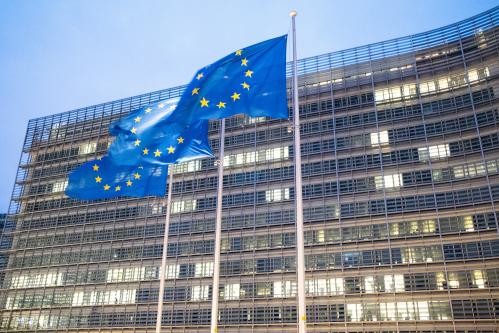Two tragic crashes, ValuJet 592’s plunge into the Florida Everglades and TWA Flight 800’s fiery fall into the Atlantic Ocean, have made Americans edgy. The flying public has long counted on the Federal Aviation Administration to make the skies safe. In the aftermath of these accidents, however, even officials like former Transportation Department Inspector General Mary Schiavo have criticized the FAA’s safety oversight.
Analysts asked why the FAA allowed ValuJet to continue to fly. In the first days following the TWA disaster, even though its cause was unknown, security experts wondered whether the FAA had been vigilant enough in dealing with terrorist threats and in installing the latest bomb detection equipment.
The crashes underlined a recurring worry: Was the FAA doing its job? Critics had a simple answer: No, because the FAA is torn between its twin roles of promoting airline travel and regulating airline safety. The conflict produces strong cross-pressures on the FAA’s safety oversight. Far more important, however, are two more subtle pressures. First, in an era where government’s critics believe the only good regulation is a dead regulation, the FAA has been hard pressed to minimize its intrusiveness into the airline industry. Second, faced with fast growing startup airlines and old airlines under tough cost pressures, the FAA has strained to cope with vast changes in the way the industry operates.
ValuJet, for example, expanded at a dizzying rate. Its fleet doubled over the past year and the airline relied on a confused network of dozens of contractors to keep up with maintenance. It now appears likely that miscommunication between the airline and one of its contractors led to dangerous oxygen generators being loaded into the belly of the ill-fated flight.
The FAA’s critics, meanwhile, were arguing that the agency ought to keep off the backs of the industry, that its air traffic control system ought to be sold and that its remaining safety oversight ought to be reined in. The agency’s real problem, however, was not so much balancing the conflict between safety and promotion as it was struggling to build capacity to oversee a rapidly changing industry even as its critics have tried to strangle it.
This is certainly not to hold the FAA harmless. Agency administrator David Hinson forthrightly admitted that the FAA had responded too slowly to signs of trouble at ValuJet. The signs, however, were anything but clear. ValuJet relied more heavily on a larger and less integrated network of support contractors than any previous airline. It took the FAA a long time—until after the crash—to determine how to apply its safety standards to such extended airline-contractor relationships. The agency struggled to figure out what to do just as most reformers wanted to trim its operations substantially and when ValuJet was the darling of Wall Street for its rapid growth, low fares and big profits. That scarcely was an environment designed to support aggressive regulatory action.
The same basic dilemma—tough regulatory puzzles that evolve beyond standard regulators’ approaches just as reformers want to trim, not enhance, government regulation—extends to many other industries that threaten to create their own ValuJets. Critics of the Food and Drug Administration, for example, have complained that the agency’s safety review of new drugs is far too slow. “Those of us who are sick don’t have time for this,” says one radio advertisement. The solution? Pare back the FDA’s oversight and leave the safety reviews in the hands of drug companies and private labs.
The states, meanwhile, must cope with toxic chemicals when they often don’t have the basic information about what they are dealing with. Under the Toxic Substances Control Act, manufacturers and processors are required to report information about their toxic chemicals to the federal Environmental Protection Agency. But under “confidential business information” protections contained in the act, EPA usually is not allowed to share the information with state regulators. Some states that have been given access to the data have discovered huge problems, including companies that failed to obtain required permits or otherwise ducked safety rules.
In these and scores of other programs, from the cleanup of nuclear waste sites to operation of the Superfund program, the real work is being done by networks of contractors outside the immediate reach of the government regulators charged with ensuring the public’s health and safety. Government regulatory agencies have few resources and even less political support to get ahead of the curve. If problems occur, from a plane crash to a drug that causes dangerous side effects, government agencies reap the immediate headlines and lasting blame for failing to do what many people did not want them to do to begin with.
The FAA has been criticized for being a “tombstone agency”-for responding only after a plane goes down. Some of the fault for reflexive regulation surely lies at the agency’s doorstep, especially for failing to adapt quickly enough to an industry that changed far more quickly than it did. But a far larger share of the blame must be given to those demanding medieval alchemy—perfect safety at no cost—from government regulators.
Other ValuJets lurk quietly outside the public limelight and beyond the drumbeat for deregulation. The answer surely is not more heavy-handed command-and-control regulation. But government cannot escape the basic responsibilities its citizens expect of it. Meeting those burdens requires smart management, sufficient resources and the political will to do what must be done.



Commentary
Op-edPerspective on Airline Safety: Deregulation Increases Risk
July 24, 1996